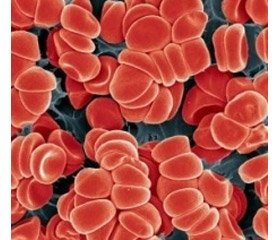Журнал «Медицина неотложных состояний» 1 (64) 2015
Вернуться к номеру
On the issue of thrombophilia prevention in the course of anticoagulant therapy
Авторы: Bondar M.V., Beshley I.A., Aryeshnikov D.B., Kravchenko O.V., Tsvyk I.M. - Department of Anesthesiology and Intensive Care National Medical Academy of Postgraduate Education named after P.L. Shupyk;
Hospital №10, Kyiv, Ukraine
Рубрики: Медицина неотложных состояний
Разделы: Справочник специалиста
Версия для печати
It has been shown the mechanisms of action of direct and indirect anticoagulants and proved the feasibility of pentosanpolysulphate using in prevention of arterial, venous thrombosis and thrombophilia. It also presented our moderate experience of pentosanpolysulphate using for the prevention of thrombotic complications in postoperative abdominal surgery patients.
We conducted in one of the surgical clinics in Kiev an assessment of 31 patients receiving intramuscular Pentosan polysulfate injections at a dose of 50 mg 2 times daily (100 mg) over a 7-day postoperative period for thromboembolic complications prophylaxis with the following prolongation of antithrombotic therapy with peroral administration of the same medication at the same dose over the next 7 days, for the purpose of Pentosan polysulfate performance evaluation in long-term prophylaxis of thromboembolic complications after abdominal and non-abdominal operations in patients at high and moderate risk forthromboembolic complications. The elective operations were performed on 6 patients having major duodenal papilla cancer (performed were pancreatoduodenal resections), 9 patients having sigmoid colon cancer (performed were Hartmann’s operations with formation of sigmostoma and abdominal cavity draining), 3 patients with giant postoperative ventral hernias, 5 patients with suppurative complications of necrotic pancreatitis and 8 patients having breast cancer (mastectomy). Daily controlled were conventional coagulogram parameters (prothrombin time index – PTI, activated partial thromboplastin time (APTT) and fibrinogen concentration) as well as concentration of fibrin and fibrinogen degradation products as indicators of fibrinolytic activity.
In result of 14-day period of the antithrombotic therapy using Pentosan polysulfateobtained were the following results (marginal values range):
PTI – within the range of 81,96 – 87,39% (norm – 80-100%);
APTT – within the range of 28,39 – 32,13 seconds (norm – 25-35 sec.);
fibrinogen concentration – within the range of 3,09 – 4,88 g/l (norm – 2,0 – 4,0 g/l); concentration of fibrin and fibrinogen degradation products – within the range of 7,69 – 29,6 μg/ml (norm – less than 10 μg/ml);
No postoperative bleedings or thromboembolic complications were observed over the study period.
In addition to this, surgeons observed more rapid wound surface healing in patients receiving Pentosan polysulfate. This was substantiated with positive effects regarding fibrinolytic system, improving revascularization and microcirculation in the region of postoperative wound as well as promoting injured tissue regeneration.
Thus, the investigations conducted have afforded an opportunity to draw the following practical conclusions:
1. Perorally or injectionally administered Pentosan polysulfate at a dose of 100 mg daily sustains procoagulant blood potential within close to the physiologically normal ranges over the whole postoperative period, while demonstrating moderate anticoagulant effect.
2. Pentosan polysulfate at the above specified doses delays the development of postoperative hyperfibrinogenemia as a manifestation of excessive systemic inflammatory reaction. This allows of reduction of thrombophilia manifestation risk along with sustaining of fibrin level within normal range.
3. In patient with reduced fibrinolytic activity Pentosan polysulfate reduces the thromboembolic complications incidence by 60% compared to indirect anticoagulants.
4. Pentosan polysulfate application in postoperative period was not associated with development of complications in form of bleedings or thromboembolic complications; natural fibrinolysis activation facilitated the revascularization and acceleration of injured tissue regeneration.
5. Pentosan polysulfate in tablet dosage form for peroral administration demonstrates the same activity/performance as Pentosan polysulfate in injections, thus providing the possibility of the outpatient usage of this medication for a long period of time (in course of several months), what improves the patient’s treatment compliance.
6. Pentosan polysulfate is applicable in the early postoperative period for the purpose of postoperative thrombotic complications prophylaxis, with no risk of postoperative bleedings.
7. Pentosan polysulfate application does not lead to manifestation of the above mentioned thrombophilias.
8. Pentosan polysulfate is the effective medication in prophylaxis of thromboembolic complications in patients requiring prolonged direct anticoagulant administration. This is of big importance for patients with diabetes mellitus and diseases associated with hypercoagulability syndrome.
9. The trait of Pentosan polysulfate mode of action is its impact not only on anticoagulant and fibrinolytic systems, but lipoprotein lipase stimulation as well that reduces the levels of lipids, triglycerides and cholesterine.

